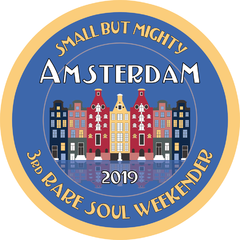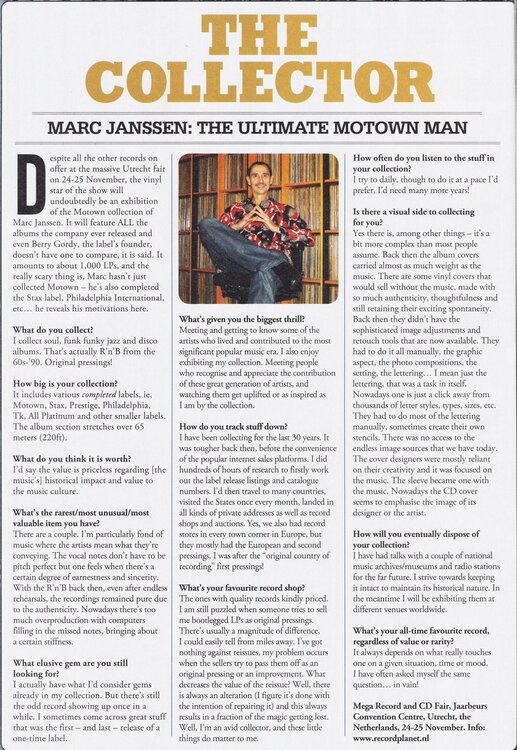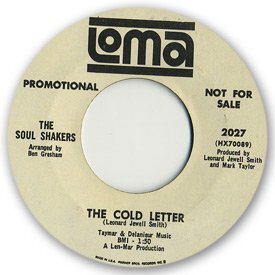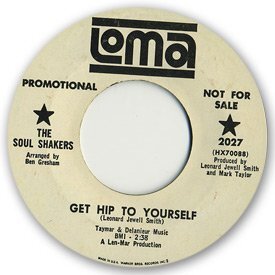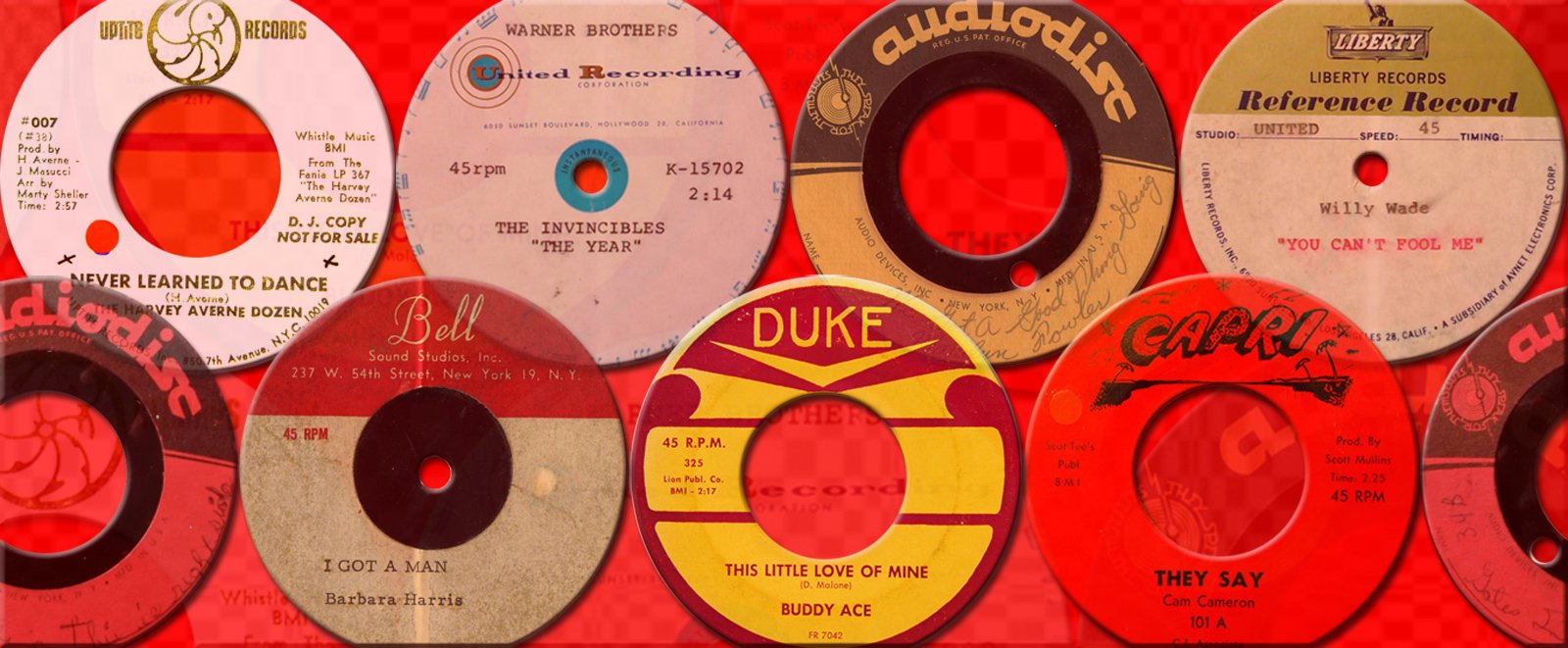
Everything posted by Amsterdam Russ
-
Motown Collection On Display At Utrecht Record Fair
Found some more info on the exhibition and on Marc Janssen. Sadly, there's no info on where he buys his shirts. If you click on this link there's an overview of the exhibition: https://www.recordplanet.nl/en/platenbeurs-2012.html There are scans here of some of the LP covers that will be on display (there are over 300 images): https://www.recordplanet.nl/en/motown.html This link provides a complete listing of the covers in the exhibition: https://www.recordplanet.nl/en/motown-records.html
-
Motown Collection On Display At Utrecht Record Fair
You know, I shared this on Soul Source because I thought that the members on here would appreciate the efforts of a collector, any collector, with an obvious passion/obsession with the music we supposedly all share a common interest in. I also thought that perhaps a few here might want to point out a few LPs that are worth looking out for - true rarities - or releases so rare or obscure that they might be missing from the supposedly complete collection. Indeed, I mistakenly thought that people might appreciate such a collection being shared with the public at large. It's a unique exhibition. It should be enjoyed as such. Instead, what do we get? A junior school playground in which it's preferred to try and belittle a collector based on what - dress and personality? I'll be at the Utrecht Record Fair and will make a point of seeing this exhibition. Why not be a bit more constructive and point out a few covers worth looking out for?
-
Motown Collection On Display At Utrecht Record Fair
True Soul Source style!
-
Motown Collection On Display At Utrecht Record Fair
I'm afraid the writer and editor must take responsibility for anything that's actually printed. Anyway, I thought the thing of interest here was the collection of Motown LPs, not the opportunity for character assassination!
-
Motown Collection On Display At Utrecht Record Fair
Ever the self-publicist, Flynny!
-
Motown Collection On Display At Utrecht Record Fair
I'd heard some months back that at the next Utrecht Record Fair there was to be a display of what is being described as the entire catalogue of Motown LPs. Not yet found a convincing description of what that means exactly, but it certainly sounds impressive and will definitely make for a fantastic display. There's an article in Record Collector about the owner of these LPs, Marc Jansen...
-
Marvin Gaye And Oma Page Info
Just as a point of trivia, and in appreciation of how deeply the historical cultural and linguistic roots of other nations run through the land of the brave and the home of the free, it's worth pointing out that "Oma" means "grandmother/grandma" in Dutch. For grandfather/granddad" the word is "Opa". Possibly she came from a region of the States that still had a strong Dutch heritage.
-
Bob Smith - Boo Kou?
Have always preferred the other side! "Hey, Bobby!" "Yes, Charlie?" "What colour's that thing, man?" "That thing is green..." "You sure, man? Who told you, man? "I'm telling ya, that thing is green!" Love it!
-
Books Update
This sort of licensing arrangement is standard practice and doesn't specifically relate to the UK or US. At its most basic, images can be sold on as: * Royalty free - the buyer makes a one-off payment and has unlimited use of the image. * Rights-managed - how the image is used, where (including which countries) and for how long, is agreed as part of the sale. * Exclusive - the photo is sold to one buyer only, which gives them an image that no one else has. Newspapers and fashion/gossip mags like exclusives! There are variations, but broadly speaking they will fall into one of these three categories.
-
Books Update
You're talking about two separate, but closely-related things here. One is about what defines an editorial context, and the other is whether publicity photos can be included in the resale or licencing of editorial content to other sources. To answer the first question, the Oxford Dictionary offers this definition of 'editorial': relating to the part of a newspaper or magazine which contains news, information, or comment as opposed to advertising That seems pretty clear cut to me. Nowadays, of course, you need to include online publishing to that. The boundaries between what is editorial and what is advertising blur in publishing (as it does on broadcast media as well). So much so that there is a third category of content in media, the advertorial, which is commercial/advertising content presented as editorial. This, however, is usually paid for by a client, and so is deemed as being advertising rather than editorial (indeed, once upon a time, most magazines would clearly label advertorial as such so as to not confuse its readers). Regarding the latter part of your question, my feeling is that if editorial were being sold or licensed for money - and the publicity photos were included in that product - then anyone with a copyright/licencing claim to any of the images might successfully argue that this is a commercial package (after all, money is changing hands), and under law should be treated as such. But that's only a guess on my part...
-
Books Update
It's a good time to point out that 'fair use' is a principle that applies to USA copyright legislation - not the UK. The UK uses principles known 'fair dealings', which are stricter. The blanket use of the term 'fair use' is confusing because what might be acceptable in the USA isn't necessary acceptable in another. An image of just about anything is automatically protected by copyright. However, copyright owners can and do permit their work to be used under various licenses. In certain situations this works as being implied consent for the material to be used. Press/publicity images carry an implied license that allows media publishers to use them freely and without the need for permission. Sometimes this may require that attribution is given - that the name of the photographer/agency is printed alongside any published image. The majority of photographers want to have control over how their work is used. They require a commercial licence of one form or another before an image can be reproduced by anyone else. A photographer taking images of a band for a record label will usually have signed a contract that assigns the licencing rights of the images to the record label, or perhaps to the agents/representatives of the group. It works much like it did in the darker days of the music recording industry, where artists and groups were often paid a one-off fee for recording the song or session and didn't get the copyrights, royalties or any other rights. In the USA, this type of deal falls under the 'work for hire' laws, which basically say: if I employ you as a contractor, anything you create, and any rights associated with them, belongs to me. The thing about copyright law, no matter which country you apply it to, is that it is generally not black and white, right or wrong. Instead, laws provide broad guidelines about what is allowed and what isn't, and each case is judged on the specifics of the situation. Just to reiterate - reproducing publicity stills, labels scans, record sleeves in an editorial context - no matter which country you're in - should not be a problem. By 'publicity stills', I mean those images that were distributed freely to the press for use in magazines, newspapers, etc, etc...
-
Books Update
Publicity images are released on the basis that they can be freely reproduced in an editorial context, i.e., in magazines, books, newspapers, in TV reports and anywhere else where text is provided as an information source to users. Copyright is not an issue. However, if you were to use publicity images in a commercial context, for example, had them printed on t-shirts which you then sold, and had not agreed commercial usage rights with a) the people in the image, b) the agents/representatives of same, and c) the photographer, then you run the risk of facing legal action from any or all of them. It's the same with scans of records/labels/sleeves - use them in an editorial context and there are no copyright issues.
-
Soul Shakers White Demo Get Hip To Youself
Have seen a rising interest for this 45 in this over the last 12-18 months - for both sides, but primarily for The Cold Letter. Has someone been playing it out recently?
-
Soul Shakers White Demo Get Hip To Youself
Was there meant to be a scan with your post? Get hip to yourself/The cold letter... released on Loma (2027), January 1966. Both sides written & produced by Leonard Jewel Smith. Vinyl? Not seen one. Everything on Loma came out on styrene.
-
"my Baby Can't Say No" - The Speed Limits
I'd put money on the acetate appearing on one of Rob Wigley's La Beat lists back then. Rob..?
-
"my Baby Can't Say No" - The Speed Limits
Rob Wigley had this on one of his lists in early/mid 80s (price 50 quid, I'm certain). I always presumed that Rob Marriot got it from him because not long after he played it at the 100 Club - three times in one night, if I recall correctly!
-
Frank Wilson
Pirated copy, Pete? Not quite sure how you came to that analogy. We're not talking about the mass produced emidiscs of the 70s. And anyone can press a 45 and stick a label on it (and, of course, they frequently do)! Nor do I understand why something is of a different value when it does indeed have the same musical content, but is on a format that is much rarer to get hold of. I think it's more to do with the preference of the buying market at the end of the day. Acetates are rarer, but the market in the main just doesn't want them. For a market driven by rarity, that doesn't quite make sense.
-
Frank Wilson
Never understood the logic that acetates are somehow of less worth than an actual release of something. If there is but one of something on one format, but multiple copies of it on another format, which is the rarer? Even if there are multiple copies of an acetate, their numbers are invariably trivial compared to the number of vinyl/styrene copies pressed!
-
Retrospective Boots
Sebastian hit the nail on the head with the first reply. Central to this is a misunderstanding by the original poster of what a 'boot' is. A US release issued legitimately in the UK (or any other country) is not a boot. A 45 repressed in a market to cater for demand is a reissue. An illegally pressed record is a boot. The word 'boot' comes from 'bootleg', which originally referred to illegal bottles of hooch hidden inside the bootlegs of smugglers. You've got your reissues and boots mixed up so badly that you need resouling!
-
Quality White Card Sleeves?
I've tried both and Sounds Wholesale are the one for me: https://www.soundswholesaleltd.co.uk/acatalog/7__WHITE_CARD_RECORD_SLEEVES.html
-
Impressive Cloud Buddies
I had a go at putting together a couple of mixes some weeks back. One got pulled from Soundcloud because of a copyright infringement claim, so I favour Mixcloud. I can be found on both sites and YouTube under the name of HarveySoulFinger.
-
Adam Wade - Everyone Is Looking For That Someone
Excellent - thanks!
-
Adam Wade - Everyone Is Looking For That Someone
Adam Wade - Everyone is looking for that someone What label? Looking online, I can see that it got a Stardust reissue, but I can't find a mention of an original release. Similarly, there's no mention of it in the reference guides that I have. Thanks...
-
Why Demo Copies Anyway?
For tax reasons. Merchandise used as promotional giveaways would be tax deductible.
- Record Cleaning Problem

